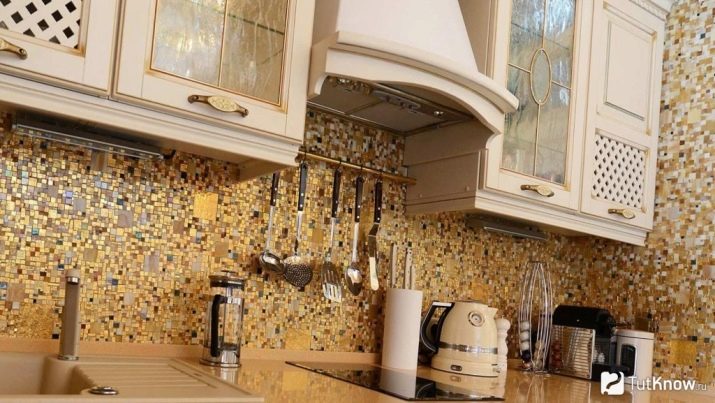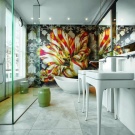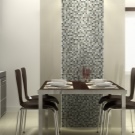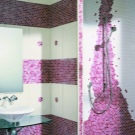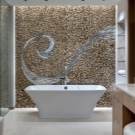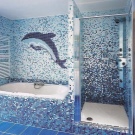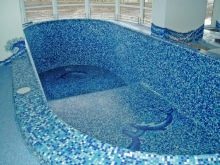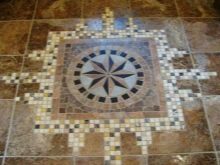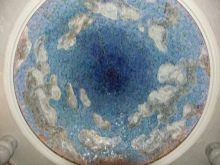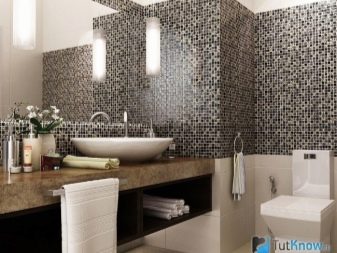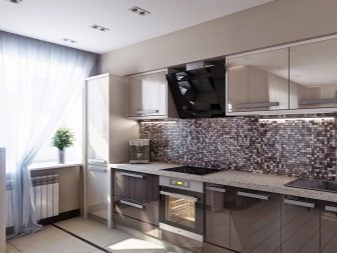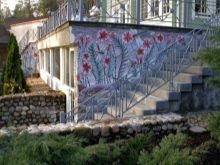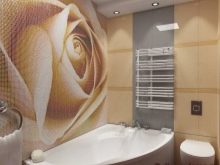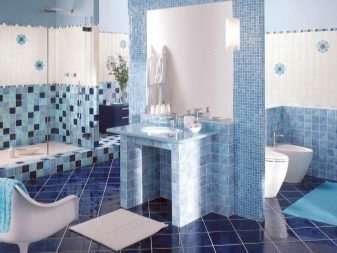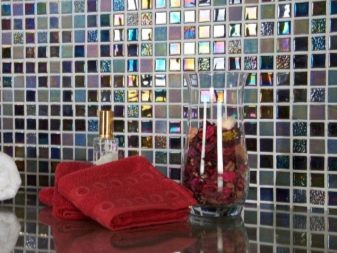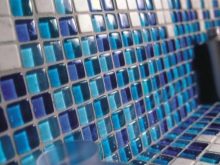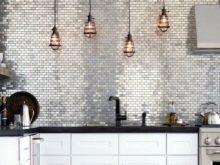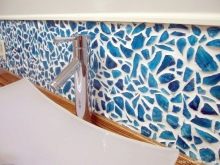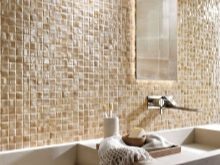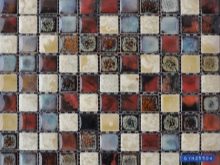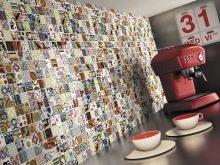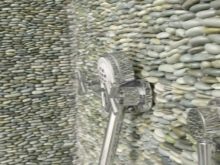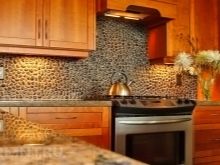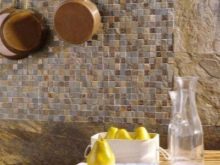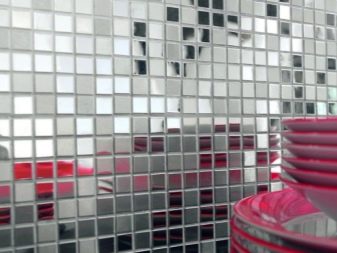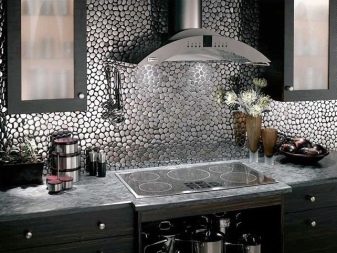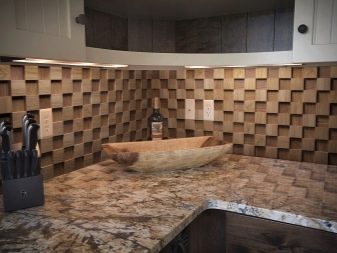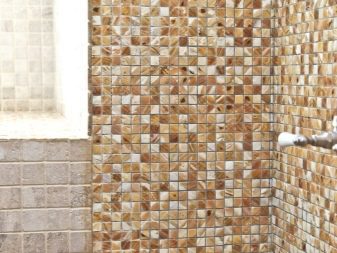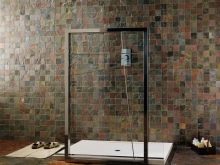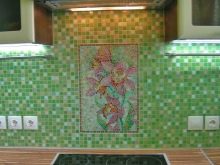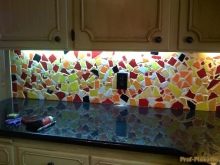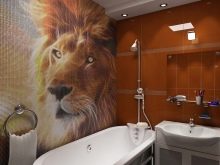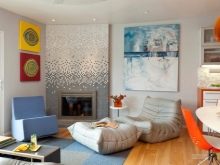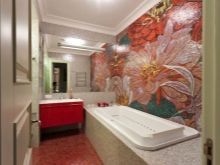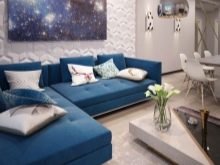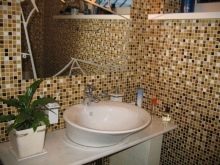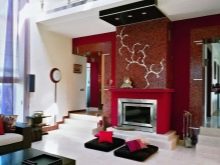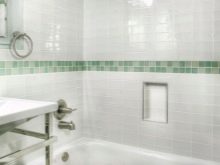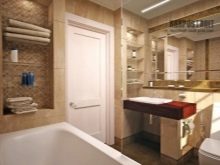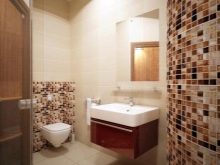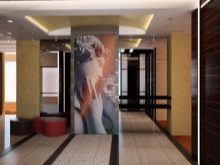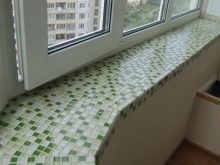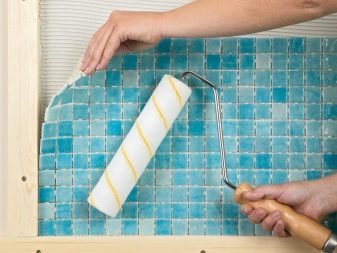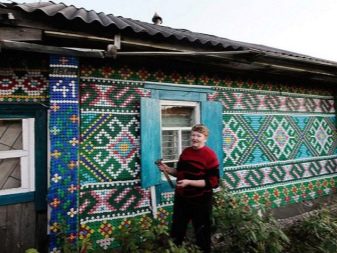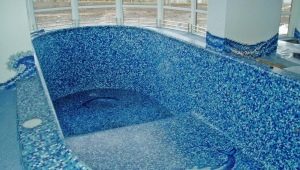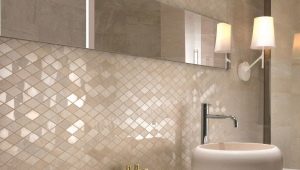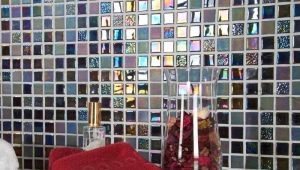Mosaic on the wall: features of decoration and options for decor
Mosaic - a beautiful view of art that adorns many architectural structures. Her magic - in small pieces, from which you can lay out any image with a variety of subjects. The human eye is designed so that it needs to cling to the details when considering the object. That is why the mosaic is so attractive. It consists of small elements, which can be considered endlessly without getting tired of contemplation.
Special features
Mosaic panels are used for decoration of various surfaces of architectural structures. In the cathedrals you can see mosaic canvases on the curved inner surface of the domes, on the arches. You can find mosaics of colored tiles on the roofs of sacral structures. And also in small pieces of ceramics lay out the inner surface of the pool and walkways.You can place a mosaic image on the floor, it will merge the interior into a coherent whole.
But the most common way of placing mosaic images is, of course, the walls of architectural structures. The mosaic on the wall is better readable, as it is at the level of vision. Her beautiful images become part of the human environment, enter his world, delight the eye and lift the mood.
That is why if you want to include in the design of the room a picture of a small piece of ceramics or stone, it is better to arrange the canvas on the wall so that it attracts everyone with its beauty.
In the architectural structure of the wall there are external and internal, flat and curvilinear. The application of mosaic panels on the exterior and interior walls is slightly different. As a rule, the filling of almost all planes is more characteristic of the interior of the room. But also inside you can use more fragile materials that are less resistant to the effects of the environment, rain and snow.
Exterior walls are most often decorated with mosaic cubes in part. Although there are houses where the facades are completely covered with paintings from small pieces.But such images practically destroy architectural forms, turning the building into one continuous picture.
It is easy to apply a sheet of small parts on a flat wall. But due to the fact that the mosaic is created from small pieces, it can decorate any shape of the walls, and curvilinear as well.
Materials
Small pieces to create beautiful images of modern manufacturers are made from different materials.
It can be glass cubes, transparent, painted in any color, colored matte, which are called smalt, gold, silver, monophonic and decorated, and even mirrored, reflecting the surrounding world.
Glass is inert to the effects of chemicals, does not collapse under the influence of rain, snow, is durable with adequate use. Therefore, these cubes can be used to design walls both outside and inside the room. Their only drawback is the high cost of the mosaic. In order to create creative compositions on the walls, you can use broken glass, if it has a beautiful appearance. Broken porcelain painted plates and other dishes are also suitable for creativity.
Any elements of glass have the same properties characteristic of industrial mosaics.
And also the mosaic is made of ceramics, creating small tiles of various shades. Ceramic cubes can be matte and glossy, which gives a variety of elements used and decorates mosaic images with a combination of different textures. Ceramics is also inert to the environment, does not respond to aggressive solutions, does not react to rain and snow, is quite durable. Therefore, it can be used to finish the exterior walls of buildings and interior rooms.
It is especially good to use it for wet rooms and places where fire is burning. A variety of ceramic mosaic is porcelain - extra strong ceramics. Due to the special properties of porcelain, it should be used to finish the outer walls, although inside it can look great.
Another mosaic is made of natural stone. The industrial method is made cubes of marble, travertine, jasper, lapis lazuli. From the rocks cut pieces that are ideal for each other. Stone mosaic can be very beautiful, with a natural pattern and veins.However, when it is placed in wet rooms, it is necessary to take into account the peculiarities of the stone. The stone has pores and a certain chemical composition.
Because of this, some rocks may not tolerate the effects of modern detergents, begin to dim and collapse. Therefore, a stone is better to draw dry rooms. And you can also use small pebbles of natural forms and pebbles that are rolled by sea waves to decorate the walls.
Sometimes the use of natural irregularly shaped pieces creates a stronger decorative effect than perfectly sawed industrial cubes.
Modernity gave us another kind of mosaic - metal. It is bounded by the gray colors of the metal and the brilliance of its surface, therefore it has less variety than other species. But it can also be very beautiful in the interiors of a certain style. Metal pieces are made of stainless alloys. But since the metal can be exposed to the external environment, as a rule, such a mosaic is used in the interior of buildings.
Mosaic from natural materials, in addition to stone, is often exposed to the environment. Therefore, it is better to use inside the building.
At the moment, the industry produces elements for creating wooden panels, shell pearlescent and coconut. Shells carry water well, so they can be used in bathrooms and kitchens. Coconut can withstand water, but it should not be used in wet areas. Wood does not tolerate water, it swells and can crack in a humid environment. In addition, the tree burns well, so it is not used in wet rooms and near fire.
Mosaic elements
Forms of mosaic elements can be very diverse. The most popular are the cubes, as they allow you to lay out a variety of scenes. There are options for a panel of elongated rectangular parts. Now the factories produce six- and octahedral details for mosaics. There are even options for panels of round or oval elements. There are composing mosaics in which all the details are of the same shape. And there are those that are a combination of different parts.
Very often in the interiors use mosaic, where the elements are tightly fitted to each other. In such paintings components can be of the same form or different.But there is a technique when cubes or pieces of another shape are laid out according to a pattern. In this case, the components of the panel can be located at an angle to each other, depending on the picture.
The location of the mosaic on the wall
Inset canvas very actively attracts the eye. Therefore, they should not cover all surfaces. Its small structure looks great on a plain background of other materials.
Indoors wall mosaic can cover one of the walls of the room. It can be monophonic with a play of shades, a matte and glossy surface from different pieces. But also with the help of mosaic, you can create decorative patterns or paintings on the wall. You can place a mosaic pattern on a fragment of the wall surrounded by other finishing materials. So the canvas will look advantageous on a calmer background.
In any case, the room must be set aside a wall under such an attractive element, which plays an important role in the room. Then this part of the room will become central and attract all the attention.
Sometimes a wall is trimmed with a more monotonous mosaic or with a not too bright pattern, but it is combined with a group of furniture, for example, gypsum cladding is suitable for this purpose.The velvet texture of the upholstered furniture underlines the beauty of the brilliant mosaic. Furniture group, for example, a beautiful sofa and mosaic should complement each other in color. In the case of a successful solution of such an element will be the main indoors.
And also the mosaic is used as a beautiful finish in addition to other materials and furniture. The technique of decorating the work surface in the mosaic canvas is widespread. The wall between the lower tier of furniture and the upper, decorated with mosaics, creates a more attractive image of kitchen equipment. In the same way make out and the working surface in the bathroom between the sink and mirror.
One of the main elements of the living room is a fireplace. The presence in this zone of elevated temperature and fire is well combined with the laying of ceramic mosaic on the plane of the fireplace and the walls around it. Making a fireplace mosaic canvas creates this element of the interior more solemn look.
Monochrome mosaic is used to finish parts of the wall in the form of a strip of vertical or horizontal, edges of the structure.
Sometimes mosaic panels draw down the falling parts of the room in order to diversify their appearance. So you can finish the built-in wardrobe, niche, corner.As a result, such elements become very attractive and attract the eye.
One of the main elements of the room are openings - windows and doors. Therefore, if you want to create an interesting interior, you can trim the entrance or window, as well as the window sill with mosaic canvases.
Wall mosaic is perfectly combined with other decor in the design of the walls in the hallway or in the hallway. It can be used for finishing the selected part of the room as an independent device, or in combination with other elements. For example, a decorative mosaic canvas will look great surrounded by large tiles.
You can apply a mosaic image on the background of other materials. You can create a picture of a combination of different materials - stone, ceramics, broken porcelain.
The stores have the opportunity to buy ready-made compacted canvases, both monophonic and with a pattern. They are much easier to mount on the wall, since they have already been assembled by experts into the finished product. If you want to close a large plane, acquire several so-called matrices - mosaic canvases. And you can fantasize yourself, making out the room on your own.
The same principles are applied to the outer walls of the house. As a rule, those parts of the structure that attract more attention are selected. This is the entrance, porch, window, lower part of the house or a large surface of the wall. In this case, you can also use ready-made mosaic canvases or show creative imagination, having decorated the structure with a variety of materials. Fantasy mosaics can give originality even to a very simple architectural structure and make it a highlight in the building.. This especially applies to private houses, in the image of which every owner wants to show his individuality.
For information on how to properly lay a mosaic on the wall, see the following video.

